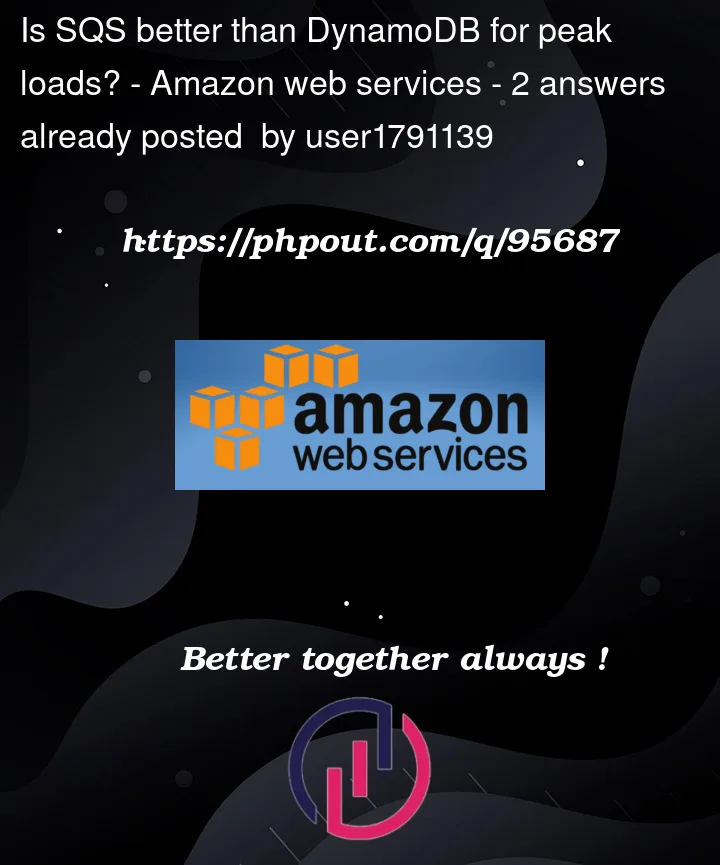A service runs on ECS and writes the requested URL to a DynamoDB. Dynamic scaling was activated to keep the costs for DynamoDB from becoming too high. DynamoDB scales slower than requests are coming in at any given time, so some calls are not logged. My question now is whether writing to an SQS would be the better way here, because the documentation says:
Standard queues support a nearly unlimited number of API calls per second, per API action (SendMessage, ReceiveMessage, or DeleteMessage).
Of course, the messages would then have to be written back to DynamoDB, but another service can then do that.
Is the throughput of messages per second to SQS really unlimited, so it’s definitely cheaper to send messages to SQS instead of increasing DynamoDB’s writes per second?




2
Answers
I don’t know if this qualifies for a good answer. But remembering a discussion with my architect at the time, we concluded that to have a queue for precisely this problem seems good practice, regardless of load. It keeps requests even if services go down, so there is an added benefit.
SQS and Dynamo fit two very different use cases. Its not so much which is better, its which is right for what you need.
Dynamodb is a NoSQL Document based Database. This is best for when you have known access patterns to data that needs to persist over time, that you need to access quickly, but probably are not making many changes too (or at least the changes do not have to be absolutely immediately, sub 5 ms accessible). Each document in a dynamodb is similar (but also very different) to a row in a standard SQL table, in that it will have attributes (columns) keys (Partition and Sort Key) and be retrievable through a query (though dynamic on the fly queries are NOT good for Dynamo)
SQS is a Queue system. It has no persistence. Payloads of JSON objects are dropped into the Queue and then processed by some end point – either a Lambda, or put into a dynamo, or something else entirely depending on your products use case. It is perfect for when you often receive bursts of data but your system needs some time to handle each individual payload – such as it is waiting on other systems to finish before it can handle the next one – so instead of scaling horizontally (by just handling all the payloads in parallel) you have to scale vertically (be able to handle more payloads at once through a single or only a few threads). You cannot access the data coming in while it is waiting in the queue, no queries on said data, only wait until that data pops/pushes off the queue and into processing by whatever system you have set up to receive it.
The answer to your question is entirely dependent on your use case and your system – something we here at SO will never really understand or know simply because we will always be hearing about it through you and never really experiencing it. As such, to answer it, you need to understand the capabilities of both Dynamo and SQS, the pros and cons for each, and then determine which is best for your product.